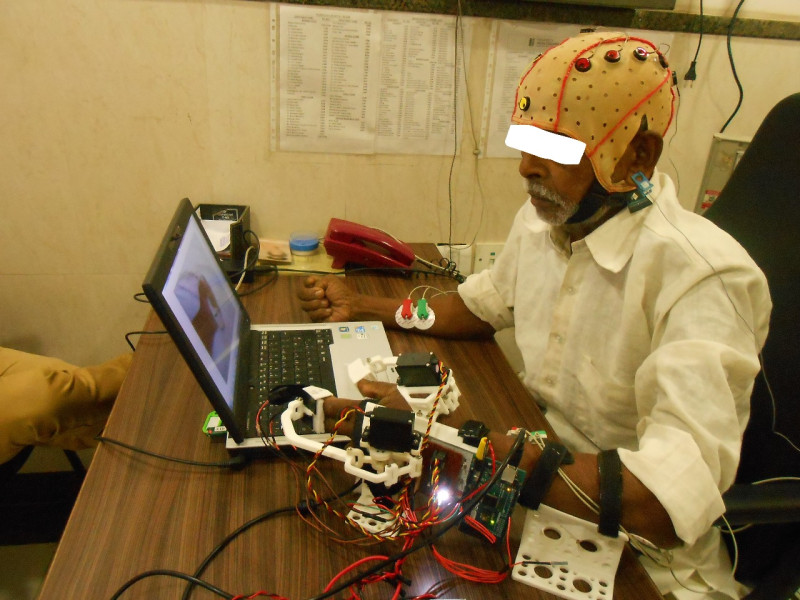The Indian Institute of Technology Kanpur (IIT Kanpur) has unveiled the world’s first Brain-Computer Interface (BCI)-based Robotic Hand Exoskeleton, a groundbreaking innovation poised to revolutionize stroke rehabilitation by accelerating recovery and enhancing patient outcomes.
This technological marvel is the culmination of 15 years of dedicated research by Prof. Ashish Dutta from the Department of Mechanical Engineering at IIT Kanpur, supported by the Department of Science and Technology (DST), the UK India Education and Research Initiative (UKIERI), and the Indian Council of Medical Research (ICMR).
It combines three critical components such as brain-computer interface (BCI), which captures EEG signals from the brain’s motor cortex to detect the patient’s intent to move; robotic hand exoskeleton performs therapeutic hand movements; and software synchronizes brain signals with the exoskeleton to provide real-time assist-as-required force feedback.
This synchronized system ensures continuous brain engagement, fostering faster and more effective recovery.
Prof Ashish Dutta said: “Stroke recovery is often a long and uncertain process. Our device bridges the gap between physical therapy, brain engagement, and visual feedback, creating a closed-loop control system that activates brain plasticity—the brain’s ability to adapt and reorganize itself.”
“This innovation offers renewed hope, particularly for patients whose recovery has plateaued, enabling them to regain mobility. With promising results from trials in India and the UK, we are optimistic about the device’s transformative impact on neurorehabilitation.”
Traditional physiotherapy methods often fall short due to limited brain involvement, as stroke-induced motor impairments typically stem from damage to the motor cortex. The BCI-based exoskeleton overcomes this limitation by linking brain activity with physical movement.
During therapy, patients are visually guided to perform random hand movements—such as opening or closing their fists—while the device detects EEG signals from the brain and EMG signals from the muscles.
These signals are fused to activate the robotic exoskeleton in assist-as-required mode, ensuring harmony between the brain, muscles, and visual engagement for improved recovery outcomes.


